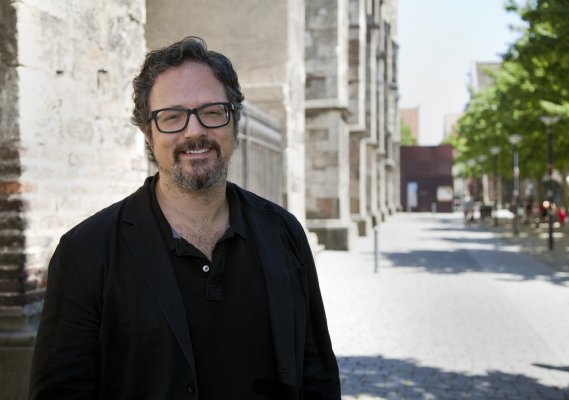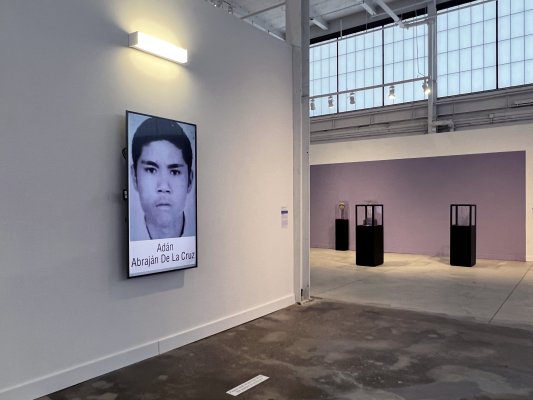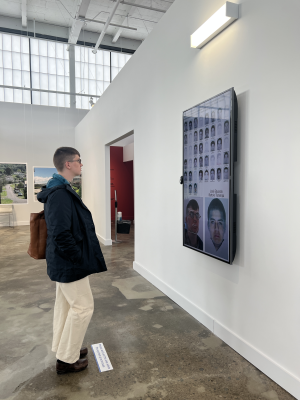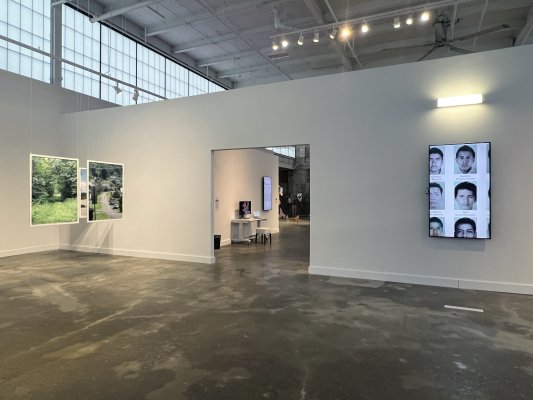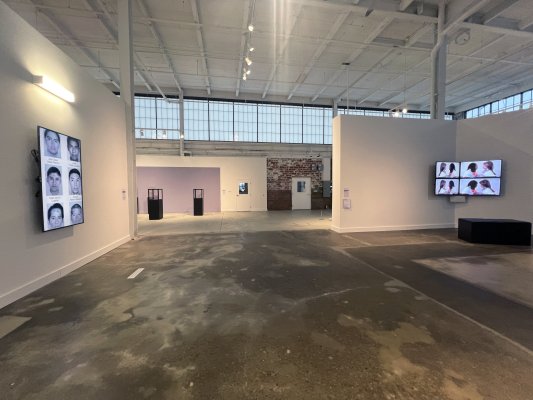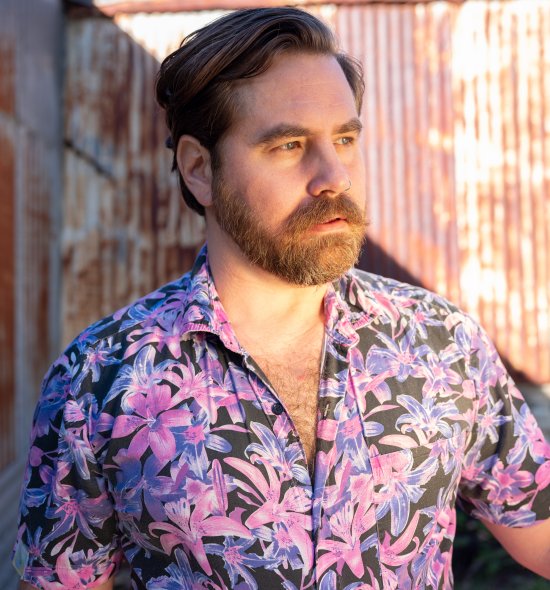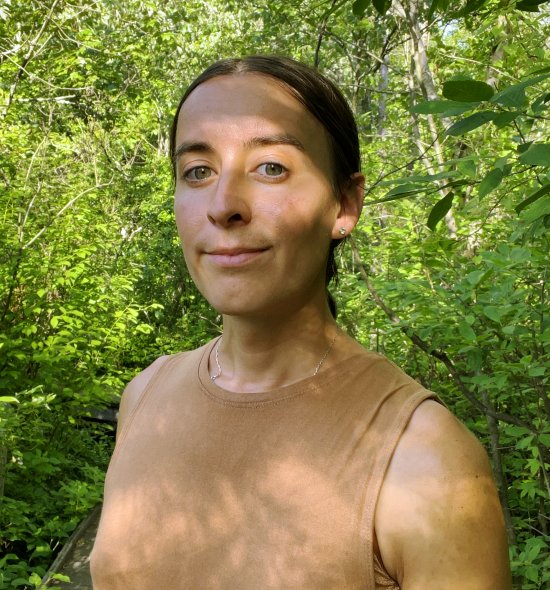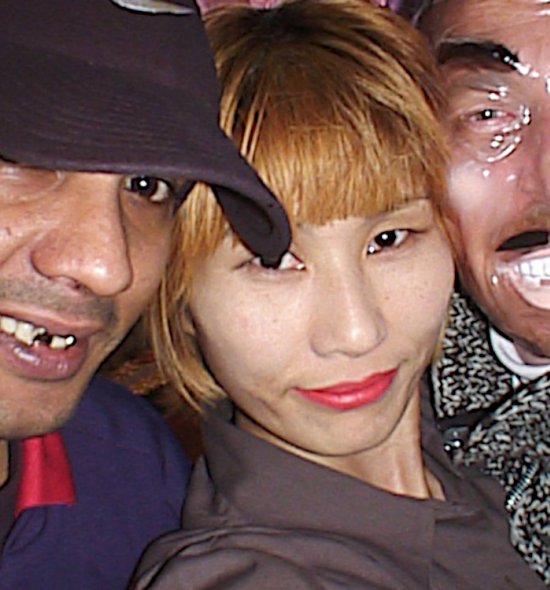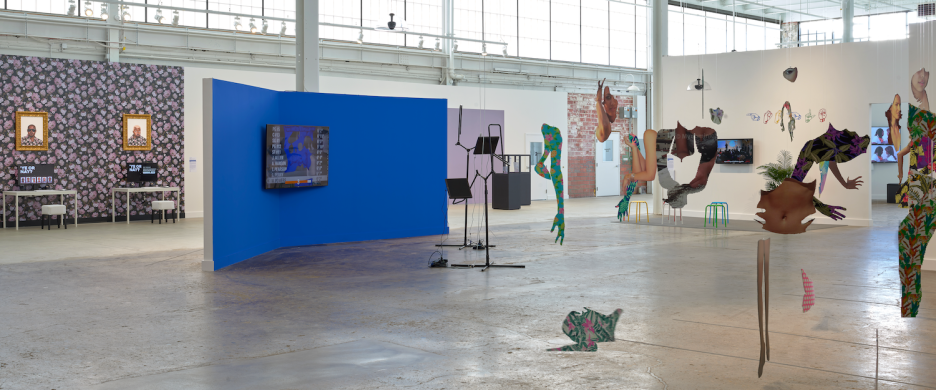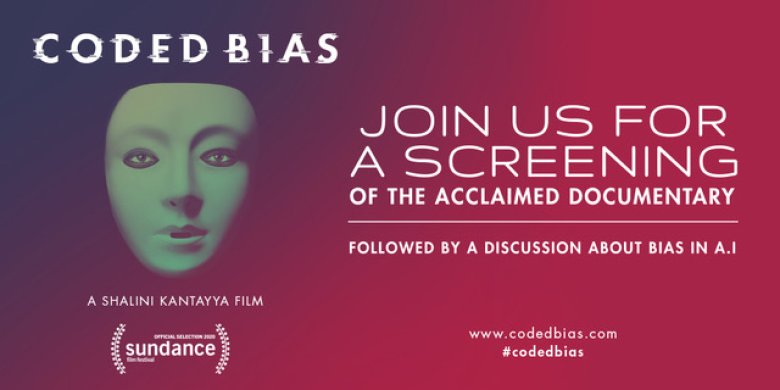Level of Confidence, 2015
Facial recognition system displayed on monitor
Courtesy of the artist
“This work is not so much an artwork as it is a campaign. We routinely use facial recognition at the studio to make artworks; I thought, what would happen if we use these algorithms to “make a mirror that searches for the missing students? The search is internal, too: looking for somebody who could have been us is a search for a fraternal connection, inside of us.”
—Rafael Lozano-Hemmer
The artist Rafael Lozano-Hemmer (he/him/his) launched the interactive project Level of Confidence to mark the six-month anniversary of the tragic disappearance of forty-three rural students from a teachers’ college in Iguala, Mexico. The webcam attached to the monitor scans your face and then compares it to a database of the faces of the missing students. On the screen, you will see your most likely match, as well as the system’s “level of confidence” in that match displayed as a percentage.
Lozano-Hemmer describes Level of Confidence as an activist campaign. The source code is freely available online, and he redirects any compensation for selling or exhibiting the piece to individuals and organizations working for human rights in Mexico. Still, the program’s fruitless searching poetically conveys the frustration of communities seeking justice. It also exposes the fact that facial recognition technologies are rarely used to solve crimes against disempowered groups; many don’t even have access to these tools, thanks to the digital divide. Ultimately, Level of Confidence questions the confidence we have in technologies that emphasize our differences instead of the common humanity that we find while searching for ourselves in the faces of strangers.
